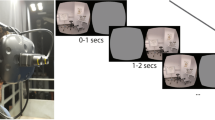Abstract
The diagnosis of ocular misalignment is difficult and needs examination by ophthalmologists and orthoptists. However, there are not enough qualified personnel to perform such diagnoses. The eye position check is in part systematized. With this check system, we can detect not only the symptoms but also the angle and the extent of strabismus. However, the types of strabismus that can be detected with this technique are limited to exotropia. The purpose of this study is to develop a simplified check system to screen at least the presence of strabismus apart from the type of strabismus or amount of ocular deviation. First, we digitalized the check process. Specifically, we digitized the elemental technology, i.e., the cover–uncover function, required for automation of the typical cover test for eye position check. Furthermore, we developed and implemented an abnormality determination process and evaluated the performance of the system through this experiment, the results of which indicated a higher detection capability than the conventional cover test performed by ophthalmologists and orthoptists.







Similar content being viewed by others
Explore related subjects
Discover the latest articles, news and stories from top researchers in related subjects.References
Hasebe S (2001) The basis for progress in eye position examination. New ophthalmology 18(9):1105–1110
Fukuda T (2014) Survey report of three year old eye exam. J Jpn Ophthalmol Assoc 85(3):296–300
Takahashi Y et al (2016) Study of the occlusion time in fusion removal eye position measurement using a gaze analyzer. In: 71st Folia Japonica de Ophthalmologica Clinica of Japanese Association for Strabismus and Amblyopia 9(3), pp 234–237
Usui C (2000) Hess screen test. Jpn Assoc Certif Orthop J 28:81–92
Fujita H, Kido S, Hara T et al (2016) Current trend of CAD system including trend of AI” RSNA 2015 best reports by experts, vol 9, pp 32–35
Suzuki S, Xiaoyong Z, Takane Y et al (2017) Computer aided image diagnostic system using deep learning for breast cancer lesion detection. In: Academic lecture for the Institute of Measurement Automatic Control Society System Information Section, pp 804–809
Saitou N, Ichiji K, Xiaoyon Z et al (2017) Tracking method based on affine transformation of target tumor in X-ray moving images for lung cancer radiation therapy. In: Academic lecture for the Institute of Measurement Automatic Control Society System Information Section, pp 798–803
Uchida N, Takatuka K, Hinokuma K et al (2017) Toward the development of a simple eye position inspection system using 3D glasses. In: IEICE general conference papers H4-3, Japan, p 269
Uchida N, Takatuka K, Hinokuma K et al (2018) Automated cover–uncover test system using active LCD shutter glasses. In: 23rd international symposium on artificial life and robotics (AROB), Japan
Takatuka K, Uchida N, Hinokuma K et al (2018) Development of support system for eye position abnormality using 3D glasses. SICE system Information Department Academic Lecture Meeting, Japan
PLATO LCD shutter goggles. http://www.namoto.com/vision/PLATO.htm. Accessed 25 Jan 2018
Translucent Technologies. http://www.translucent.ca. Accessed 25 Jan 2018
NVIDIA Nvidia 3D Vision 2 Summary. http://www.nvidia.co.jp/object/product-geforce-3d-vision2-/wireless-glasses-kit-jp.html. Accessed 25 Jan 2018
Kitagawa Y, Katou T, Wu H et al (2005) Condensation with eye-model for gaze estimation. Technical reports of IPSJ, vol 2005-CVIM-150, no. 88, pp. 17–24
Nitschke C, Nakazawa A, Takemura H (2011) Display-camera calibration using eye reflections and geometry constraints. Comput Vis Image Underst 115:835–853
Nakazawa A, Nitschke C (2012) Point of gaze estimation through corneal surface reflection in an active illumination environment. In: European Conference on Computer Vision—ECCV 2012, pp 159–172
OpenCV: introduction to image analysis visualization of optical flow. http://www.cellstat.net/opticalflow/. Accessed 21 Jan 2018
The principle of the image processing algorithms optical flow estimation. http://opencv.blog.jp/algorithm/opticalflow/. Accessed 21 Jan 2018
Yamauchi Y, Yamashita T, Fujiyoshi H (2013) Detection of human bodies based on statistical learning method from images. IEICE Trans J96-D(9):2017–2040
Shibata S, Zhqiang WU, Yamamoto T (2017) A constitutional method on gaze estimation using particle filter and neural network. J Inst Ind Appl Eng 5(1):25–33
Woods AJ, Helliwell J (2011) A survey of 3D sync IR protocols. CMST 944:1–16
Handbook of orthoptic principles. http://panda-ort.com. Accessed Aug 2018
Gunner.Fameback (2003) Two-frame motion estimation based on polynomial expansion. In: Scandinavian conference on image analysis, image analysis, pp 363–370
Acknowledgements
This research was supported by a Grant-in-Aid for Scientific Research (JP17H01736) from JSPS KAKENHI.
Author information
Authors and Affiliations
Corresponding author
Additional information
Publisher’s Note
Springer Nature remains neutral with regard to jurisdictional claims in published maps and institutional affiliations.
About this article
Cite this article
Uchida, N., Takatuka, K., Yamaba, H. et al. HMD-based cover test system for the diagnosis of ocular misalignment. Artif Life Robotics 24, 332–337 (2019). https://doi.org/10.1007/s10015-018-0520-4
Received:
Accepted:
Published:
Issue Date:
DOI: https://doi.org/10.1007/s10015-018-0520-4





